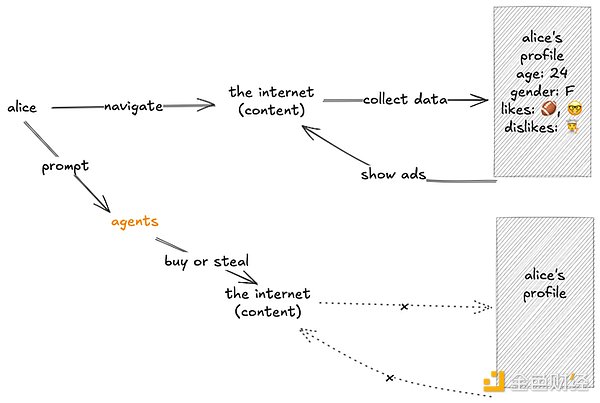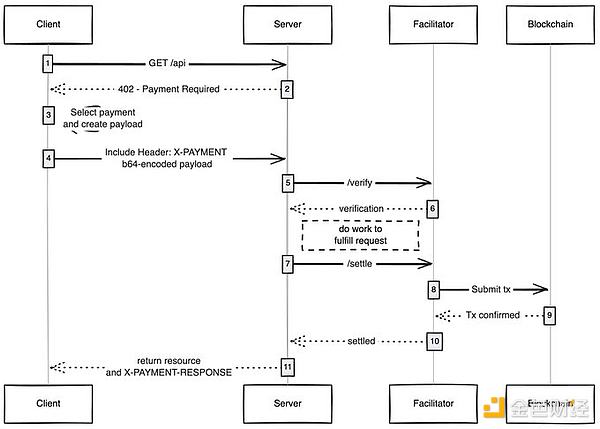Buyers: Human developers and AI agents seeking access to paid services without the need for accounts or manual payment processes. x402 supports a range of use cases, including: API services with pay-per-request; AI agents that autonomously pay for API access; digital content paywalls; monetization of microservices and tools through microtransactions; and proxy services that aggregate and resell API functionality. One of the most practical use cases for x402 is API monetization. In the current model, developers must manually create keys, manage access tiers, and enforce rate limits. With x402, an API can simply respond to unauthenticated requests with a 402 error, indicating, for example, that accessing a data endpoint costs $0.001. The client can then send the required stablecoin payment and receive an immediate response. This transforms APIs into microservices with embedded pricing, enabling fine-grained monetization at the level of individual function calls. This model is ideal for AI workloads and human developers who want to pay for actual usage.
x402 is designed for the modern internet economy and addresses key limitations of legacy systems:
Reduced Fees and Friction: Make payments directly on-chain without intermediaries, high fees, or manual setup.
Micropayments and Usage-Based Billing: Charge per call or function with a simple, programmable pay-as-you-go process.
Machine-to-Machine Transactions: Enable AI agents to autonomously pay and access services without the need for keys or human input.
II. How x402 Differs from Traditional Payment Systems
Today's online payment systems are slow, costly, and often regionally restricted.
X402 eliminates these barriers by allowing servers to request and receive payments directly through the protocol itself. There are no logins, billing dashboards, or delayed bank transfers. Value transfer is embedded in the fabric of the internet and optimized for agents and applications.
X402 stands in stark contrast to traditional payment infrastructure. It is built protocol-first and on cryptographic rails, whereas systems like Visa, Stripe, and PayPal are platform-first. X402 uses on-chain transactions, allowing payments to settle in seconds, while traditional payments typically take one to three business days.
Furthermore, X402 supports micropayments as small as a fraction of a cent, enabling high-frequency, low-cost interactions—something that is prohibitive on credit card networks due to high fees. Furthermore, it is designed to be global, eliminating the need for currency exchange or regional banking relationships. The immutable nature of on-chain transactions virtually eliminates chargebacks, fraud risks, and intermediary fees.
While traditional systems focus on human users with front-end interfaces, x402 supports machine-native, back-to-back monetization.
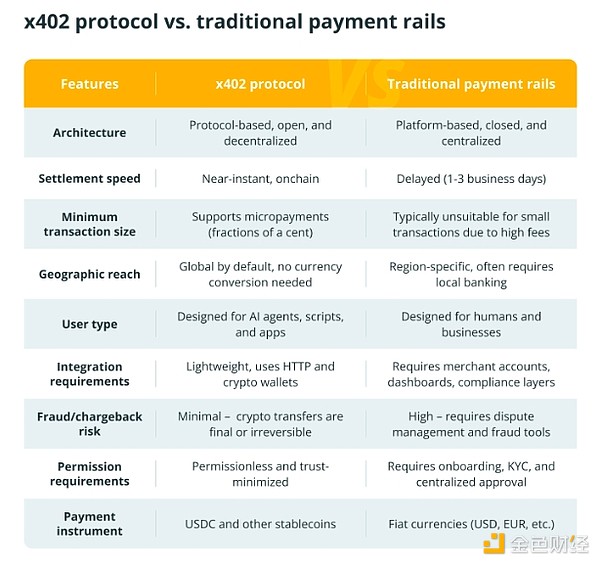
3. Is x402 sparking a new wave of memes?
According to Dune Analytics, there were nearly 500,000 x402 transactions between October 14th and 20th, a 10,780% increase compared to four weeks prior.
KuCoin Ventures noted at X that developers are now leveraging the x402 design to launch tokens directly — triggering a wave of x402-powered Memecoin issuance.
"x402 embeds payment functionality into native HTTP request-response: client accesses endpoint → server returns 402 response with `x402-PayTo` header → client makes payment → Coinbase and other service providers get on-chain events for confirmation. Zero jumps, zero UI changes, zero middlemen, zero accounts, zero waits. Pure HTTP protocol with a paywall.
Developers are leveraging x402's design to issue tokens directly - this is driving the current wave of x402-powered Memecoin issuance. Instant and fair issuance mechanism. x402 is no longer just a specification; the community has made it a Launchpad killer."
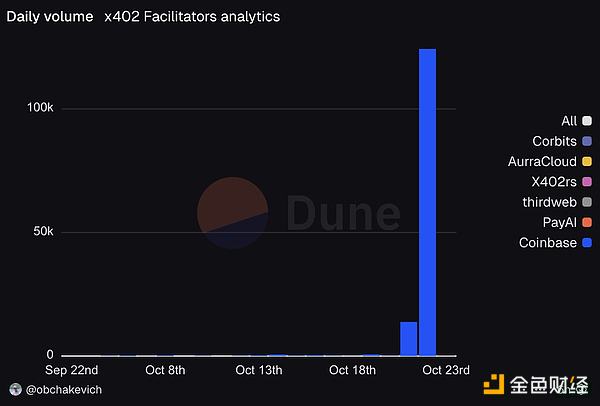
V. Is x402 a Potential or a Bubble?
Proponents believe that x402's advantage lies in its ability to simplify and standardize the payment process for AI agents. Traditional payment methods are slow, prone to chargebacks, and require manual intervention. In contrast, x402 uses cryptocurrency to enable instant, trustless payments between AI agents and API providers.
Furthermore, the current market capitalization of the x402 token suggests strong upside potential.
Abstract's founder Jarrod Watts warned, "I expect to see a wave of new AI coins emerge in the coming weeks to fuel the hype. Furthermore, they may be completely meaningless, but 'would you rather be right or rich?'"
Analyst 0xJeff also calls them "x402 memecoins," noting that only projects with real or near-commercial products have a chance of long-term survival.
Attachment:
Original text of aryan's "x402 Solved the Internet's Original Sin: Advertising"
For decades, online advertising has been the only way for the Internet to survive.
Everyone is competing for attention. To do this, companies collect all possible data around you, create user profiles, and show you ads.
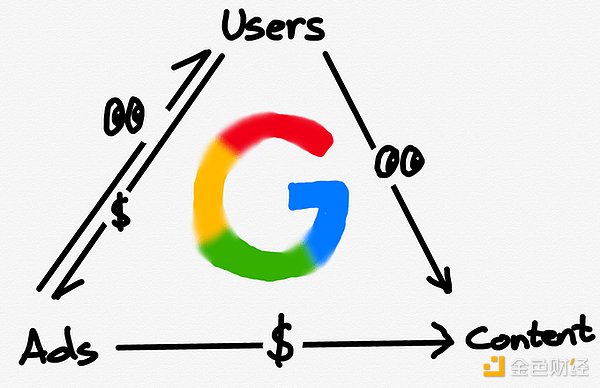
Proxy Network and Original Sin[1]
On the Internet, this model has opened up a market that is currently worth trillions of dollars.
Finance has always existed on the Internet:
But micropayments (<$1) are economically unviable (Visa/Mastercard charges about 2% + $0.10 per transaction), so advertising is the only model:
 Joy
Joy




